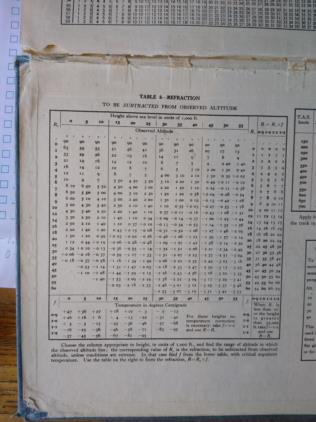
NavList:
A Community Devoted to the Preservation and Practice of Celestial Navigation and Other Methods of Traditional Wayfinding
From: David Pike
Date: 2022 Jun 28, 01:48 -0700
Frank you wrote: That refraction quantity, 34', only applies to observers near sea level at standard temperature and pressure
That’s especially true for aircraft. I guess that as the horizon is farther away at altitude, the sunbeam must come through more atmosphere. If you add on dip at altitude, the effect can be quite large. I have read of Lancaster Rear Gunners experiencing two or three sunrises descending into base after an operation. I took this with a pinch of salt, but looking at the attached photograph of Table 6 from AP3270 (HO249) Vol 3 (liberated from Vulcan XM603) you can see that at 20,000ft the Sun can be observed down to about -3.3 degrees Hs with a bubble sextant, or they wouldn’t have continued the column down to 2.3 degrees Ho. It’s perfectly possible that descending rapidly at the appropriate time from 20,000ft they might see at least two sunrises. DaveP







